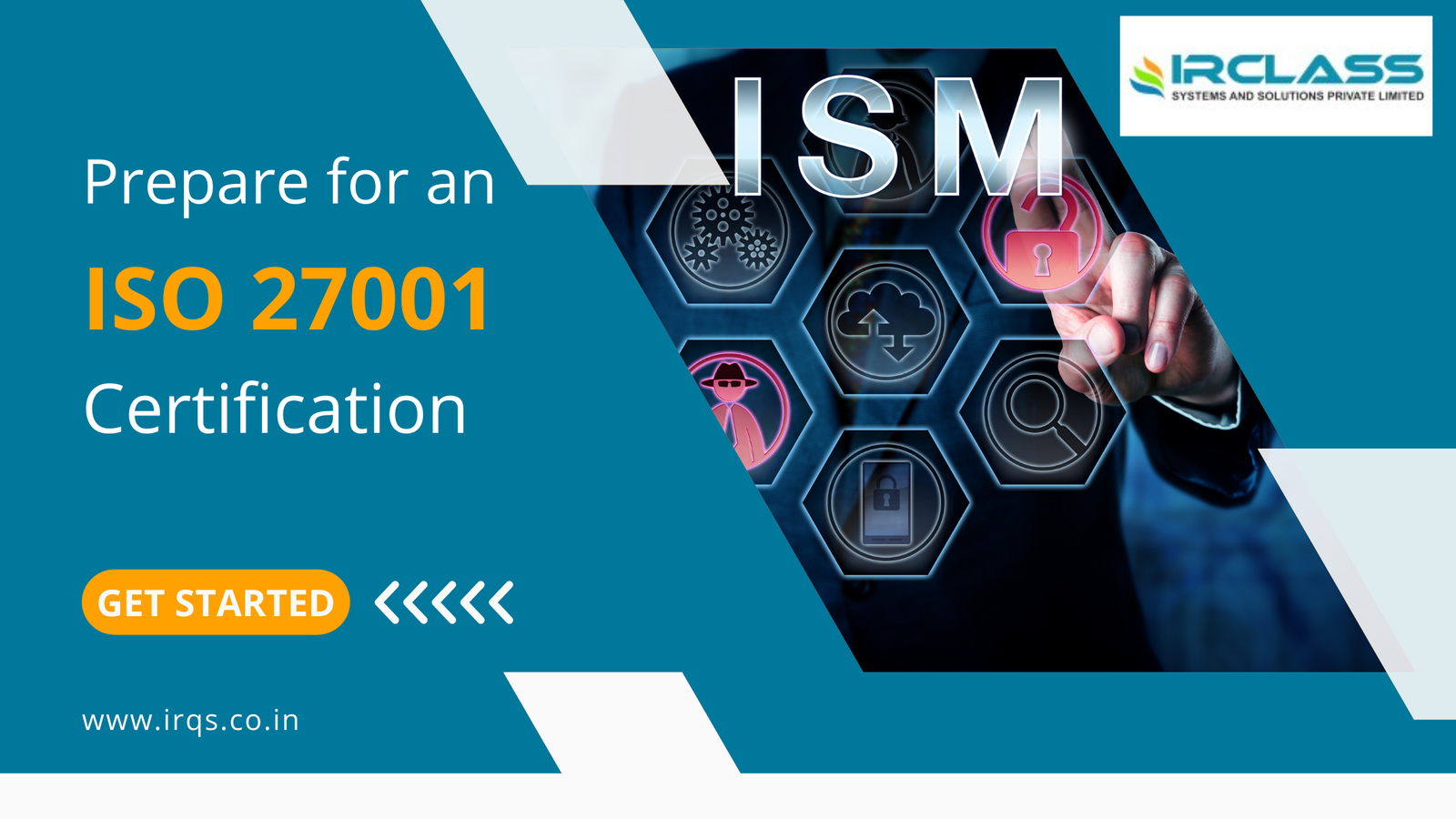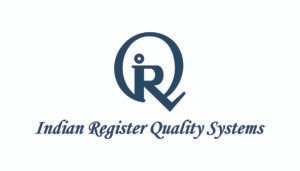Category: ISO 27001 Lead Auditor

Step-by-Step Guide to Becoming an ISO 27001 Implementer
Step-by-Step Guide to Becoming an ISO 27001 Implementer Modern protection of data in this generation is more of a must-do activity than a mere necessity. ISO 27001 is an Information Security Management System (ISMS) that assists organizations in handling their information. For any organization considering implementing ISO 27001, or for those aiming to raise awareness about information security, this guide will explain how to become an ISO 27001 implementer in a few easy steps. What is ISO 27001? ISO 27001 is a specification under the International Organization for Standardization (ISO), for establishing, implementing, sustaining, and refining an Information Security Management System. It is involved with the management of information security risks; in other words, the information in your organization cannot be accessed, altered, or even disappear. Thus, organizations demonstrate their willingness to safeguard information assets and gain credibility with customers and stakeholders. What needs to be done to become an ISO 27001 Implementer Well, now let us list down major activities that will help transform you into an ISO 27001 implementer and how it can be done. Step 1: Understand the Basics of ISO 27001 To achieve this, however, a certain level of understanding of ISO 27001 must be achieved before the actual implementation process can begin. Find out what it is, how it works, and what it means. This includes the knowledge of the Plan-Do-Check-Act (PDCA) cycle, which is at the base of ISO 27001: By knowing the foundation, you will be in a better position to implement and maintain an effective ISMS. Step 2: Build Your Team ISO 27001 can be implemented, and it is not a one-man show. To ensure this is done effectively, you will need a team of specialists who understand the nature of your organization, its policies, and goals. The management of the implementation process is coordinated by the ISO 27001 implementer or the project leader. They should include IT, HR, legal, and other officers from various departments of the organization that you think should be part of the team. This also helps in ensuring you get the best approach on how to guard information in all parts of your business. Step 3: Define the Scope of Your ISMS The next component of the requirement is that of the scope of the ISMS. This involves identifying which subsystem of the organization is to be involved in the system. It can impact the whole organization or only some divisions, activities, or even branches. The relevance of the scope is because it paints a picture of what is being done concerning security and where to concentrate more, as those areas are most likely to be attacked. Step 4: Conduct a Risk Assessment Risk assessment is one of the primary concerns of ISO 27001. It entails the performance of risk assessments and identifying risks to your information resources. Think of it as answering these questions: After that, it is possible to evaluate the likelihood and the impact of the listed risks. This assists you in identifying which risks should be of concern in the future. Step 5: Create a Risk Treatment Plan Having identified the risks, the next step is to determine how to deal with them. That is where a risk treatment plan is useful. Regarding each risk, your plan must contain data about how you are going to minimize or eliminate it. Common risk treatment options include: Step 6: Develop Policies and Procedures ISO 27001 suggests that the management of the ISMS should lead to documented policies and procedures. These documents are the policy references of your organization on information security. Some essential policies include: These policies should be well stated, easily comprehensible, and formulated specifically for your organization. Step 7: Implement the ISMS Lastly, when you have defined a clear plan and all policies are in place, you should implement the ISMS. Implementation involves: In this stage, the key is communication. ISMS should be known to all people in your organization, along with their roles concerning the system. Step 8: Monitor and Measure Performance It is also equally necessary to lay much stress on the efficiency package after the establishment of the ISMS. This involves: This has the added advantage of allowing you to address issues before they escalate. Step 9: Prepare for Certification In case you have to be compliant with ISO 27001, the next step is to prepare for the certification examination. Here’s how: The certification process typically involves two stages: Step 10: Achieve Certification Congratulations! If your organization has passed the audit, it will be awarded an ISO 27001 certification. This demonstrates a commitment to information security and enhances competency in the market. Step 11: Maintain and Improve Your ISMS ISO 27001 is not an event where, once implemented, you can set it aside and forget about it. To maintain your certification, you’ll need to: This ensures that your ISMS remains relevant and aligned with organizational objectives. Why Choose Training for ISO 27001 Implementation? Thus, it is possible to conclude that the implementation of ISO 27001 indicates sufficient knowledge and practical experience. To gain the tools for preparation and implementation, one has to take an ISO 27001 lead implementer training. Training programs, such as those offered by IRQS, cover key topics, including: The training will help build the morale you require when leading your organization through ISO 27001. Conclusion ISO 27001 is a satisfying procedure that prepares individuals to protect an organization’s information. The steps outlined will help the organization cultivate an ISMS, certify it, and improve it continuously. You may still be wondering how to get started with your ISO 27001, and inviting IRQS into your organization may be wise. Having conducted training programs with the help of ISO experts and years of experience, IRQS is a brand users can trust for ISO standards. If it is your desire to achieve promotion in your workplace or an organization seeking compliance, IRQS is the solution. Begin today and start the process of ensuring your organization has a tomorrow.

How to Prepare for an ISO 27001 Certification Audit
How to Prepare for an ISO 27001 Certification Audit A Precise Guide to Prepare for an ISO 27001 Certification Audit of Your Organization Introduction to ISO 27001 ISO 27001 is an international standard for helping organizations manage their information security. It contains requirements for an information security management system. Achieving certification according to ISO 27001 will go a long way in showing proof that you are a security-conscious organization. The reason to Prepare for the Certification A proper and systematic preparation for an audit is essential for any organization to get an ISO 27001 certification. In this way, an organization will be set for such an audit exercise; above all, the exercise could provide a way of pinpointing and addressing problems that may arise. In this connection, it saves a lot of time and resources. Steps to Prepare for ISO 27001 Certification Audit 1. Comprehension of ISO 27001 Requirements First, know the standard ISO 27001 by reading its official documentation. Know what the standard requires and comprehend the structure of ISMS. Get to know about the policies and controls that are needed. 2. Conduct a Gap Analysis A gap analysis identifies areas in need of improvement. Compare what you are doing against the requirements in ISO 27001. Make a list of the differences. This way, you know what to direct your efforts toward. 3. Create an Implementation Plan Formulate a plan based on the gap analysis, which shall specifically outline the steps to be taken in bridging the gaps. Assign responsibilities for each task identified at point two to team members. Timelines shall be set for each assigned task, and all members shall be clear on what they should do. 4. Train Your Team Make sure your team knows what ISO 27001 is all about. Conduct training sessions to explain why information security is essential. Teach them the policies and procedures to ensure that each one knows their role in maintaining security. 5. Document Everything Documentation is critical in ISO 27001. You need to Record all processes and procedures that your organization follows. These documents are meant to include: – Information security policies – Risk assessment processes – Security controls – Incident response plans Maintain these documents and keep them current, ensuring they are easy for anyone in your group to access. 6. Implement Security Controls ISO 27001 prescribes specific security controls that you need to implement. The controls will protect your information. Implement these controls in your organization. Here are some examples of controls: – Access control systems – Encryption – Backup procedures – Physical security measures To verify if these controls are effective. 7. Conduct Internal Audits Internal audits help to identify your weaknesses before the certification audit. Conduct internal audits regularly to verify whether ISMS is operating according to plans. Find out any weaknesses and correct them as quickly as possible. 8. Address Risks Risk management is an integral part of ISO 27001. Information risks shall be identified beforehand. Possible effects thereof will be evaluated, and effective measures to mitigate those effects will be adopted. Besides, your risk management plan shall be reviewed and updated regularly. 9. Perform Certification Audit Make complete preparations as the certification audit approaches. Review your documentation. Have all the security controls in place. Conduct a last internal audit. Remediate any last-minute issues. 10. Choose a Certification Body Select an ISO 27001 audit body that is reputable. Check if the selected body is credited and fully accredited—schedule for the audit. 11. Conduct the Certification Audit The certification audit is carried out in two phases: Stage 1: The Auditor goes through your documentation. They verify the design of your ISMS. Stage 2: The auditor evaluates the effectiveness of your ISMS implementation by reviewing security controls operation. Answer questions. Turn in all requested documents. Be cooperative with the auditor. 12. Conforming Non-Conformities Non-conformities shall be reported by the auditor whenever problems are detected. Address these non-conformities quickly. Implement corresponding corrective actions. Provide evidence of such actions to the auditor. 13. Maintain Your ISMS It’s not a one-off event, and maintaining the ISMS requires regular reviews and audits, keeping documentation up to date, and continuous improvement of security practices. 14. Communicate with Stakeholders Keep everyone involved: employees, customers, and partners. Show that your certification to ISO 27001 offers benefits. Present it as a demonstration of your profound concern for ensuring information security; hence, it builds trust and confidence. 15. Monitor and Measure Performance Your ISMS performance management: Key performance indicators—to measure effectiveness, regularly review these metrics and implement improvements as necessary to attain security enhancement. 16. Stay Current Information security standards change over time. Be informed about the changes in ISO 27001. Update ISMS and it will help you continue following the newly set standards. 17. Use Technology to Your Advantage Leverage technology in managing your ISMS. Software tools could be used for documentation and risk management. As many processes as possible should be automated; this way, the compliance burden will be reduced. 18. Support the Security Culture Foster a security culture within an organization. Encourage staff to adhere to security policies. Reward good security practices and this way make information security part of day-to-day work. 19. Find Help Externally if Needed If you’re encountering difficulty with it, look for outside help. Consultants can give you expert support with their experience; they can help in gap analysis, training, and implementation. This may relieve the certification process somewhat. 20. Reflect and Always Improve Quality lies within continuous improvement, so at all times, review your ISMS, look for improvements, and implement the change; it makes your ISMS effective and compliant. Conclusive Note ISO 27001 certification audit preparation involves a well-researched and detailed process. This consists in understanding the standard and conducting gap analyses on controls. Other key activities include training for the team, the documentation of processes, and internal audits. And, of no lesser importance to it, the assessment of non-conformities, the maintenance of your ISMS, and fostering a culture of security—thereby affording you a better opportunity

Becoming An ISO 27001 Lead Auditor In India: Steps And Requirements
An ISO 27001 lead auditor requires extensive training and must learn the essential skills. The success of every management system depends on auditing skills. Hence, it is associated with significant obligations, challenges, and more. Do you want to establish a career in a similar professional domain? Realize the criticalities Before beginning a career in security management, you must clarify the fundamental aspects. A Lead Auditor needs to complete an ISO 27001 Lead Auditor Training program and learn the essential skills to execute Information Security Management System or ISMS audits at organizations. They need to acquire professional skills by learning the essential audit principles, procedures, and methodologies. An ISO 27001 Lead Auditor must be responsible for managing the various operational risks and security threats. They are also responsible for carrying out obligations, like – a) Planning and leading security evaluations to gain an overview of the IT and OT infrastructures. It also includes evaluation of products, solutions, services, and associated processes. b) Developing the vital steps for ISO 27001 evaluations and organizing the ideal measures for systems, devices, and operational services with the internal and external professionals in an organization. c) Developing the essential tools to combat the operational threats with cutting-edge technology. d) Utilizing ISMS or Information Security Management System techniques and procedures to review the shortcomings and issues. Pros of getting the auditor title Becoming the lead auditor for ISO 27001 certifications requires a comprehensive approach. One must focus on learning the critical subject matters of risk-based ISO 27001 information security management systems and governance. This way, you can acquire certified competence in performing and coordinating audits of the ISO 27001 ISMS. This professional credential is vital and suitable for those who want to conduct internal or external audits and review the risk management system supporting an ISMS. It also helps you manage the ISO ISMS audit program. The ISO 27001 Lead Auditor training program is critical to incorporate the standards of ISO 27007. After completing the ISO 27001 Lead Auditor training and certificate program, the professionals can earn the certification. They can leverage the benefits of the dynamic professional perks – Enhance the knowledge base and incorporate the prime skills necessary to perform audits of Information Security Management Systems or ISMS. It is vital to conduct by following the ISMS standards. The systematic approach – Know it rightly. The quality management system depends extensively on auditing. Hence, there are more than one significant obligation, challenges, and complex issues. ISO 27001 Lead Auditor online training helps the participants meet the requisites of the ISO 27001 qualification procedure. It is critical to have the necessary qualifications and experience to excel in the professional domain. You can seek guidance from – All professional auditors aspiring to become the lead auditor must get certified by the ISO/IEC 27001 Foundation Certification body to recognize the critical aspects of ISO/IEC 27001 standards. Learning Objectives of ISO 27001 Lead Auditor Explore the ISO standards. ISO publishes and defines vital standards for information security systems. If you want to become a lead auditor for the ISO 27001 Certification, learn the integral aspects of the world-class standard. It is integral to realize the significant areas of ISO 27001. Certification body and audit experience Find a certification body that can help you get certified as a lead auditor. The aspiring auditors must meet the critical standards. But there is more. Connecting to a certification body is insufficient. Becoming a lead auditor makes it mandatory for you to complete training from a reliable source. The experience of the auditor also counts, making it a prime requirement for the lead auditor aspirants. The aspiring auditor must complete at least three ISMS audits to get accredited as the ISO 27001 Lead Auditor. Experience is critical to lead the team. The team leader must obtain an overview of the essential procedures. Summing up The lead auditor courses offered by institutions focus on extensive training and help you in the long run. You can acquire the credentials and get recognized as a competent specialist in information security governance and risk management services. Follow the systematic approach to acquire the professional skills and degree of a lead ISMS auditor.
Search
Useful Links
Recent Posts

5 Easy Steps to ISO Certification in Surat: Boost Your Business Today!

The IRQS Edge: What Sets Our ISO 9001 Training Apart from the Competition



